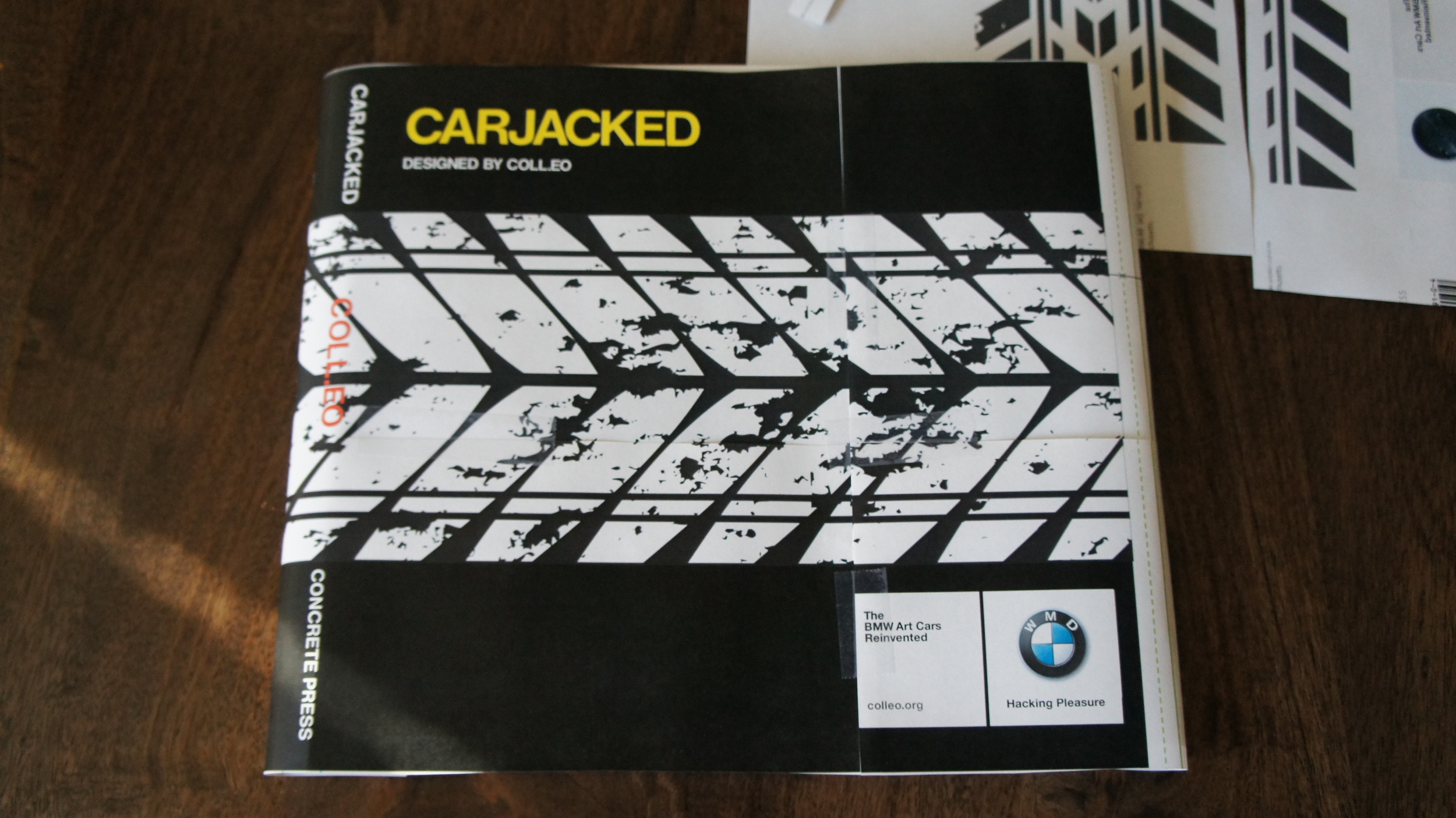CARJACKED: COVER STORY
What's going on with CARJACKED's book cover?
To make a long story short, the cover jacket was hijacked.
How?
Let's take a closer look at the book cover or, as semioticians would say, as the syntagmatic aspects of the text. The main image depitcs a section of an automobile tire print in white color on a black background. The tire print, by the way, extends to the back cover, where other visual elements, including the book title and subtitle, are reversed.
As an aside, we experimented with a variety of different tire prints designs before making our final choice. Below is an early example, which we eventually dropped because we felt that the tire looked too much like the spine of a dinosaur. Or a fishbone.
Ok, so the cover jacket features an automobile tire print.
But why?
To answer that questions, one may consider Isabelle Arvers' definition of CARJACKED - the art project that inspired the book - as "an act of counter-appropriation".
Specifically, COLL.EO appropriated both the BMW Art Car Initiative and a series of artworks - and/or trademarks, styles, and iconographic motifs of rockstar artists. It was therefore essential to communicate the counter-appropriative nature of CARJACKED directly on the cover.
To achieve that goal, COLL.EO firstly appropriated and subverted the design of the 2013 Design Impulse Ad Campaign developed by Hamburg-based agency ServicPlan and introduced by BMW in February of 2013, whose slogan is "Designed for Driving Pleasure". The appropriation applies to several design elements of the campaign, including the two boxes on the top right displaying the brand logo and the URL, among other things. Below are some of the original BMW print ads, featuring car photographs by Uwe Düttmann:
In other words, the book cover is a pseudo-ad campaign for CARJACKED - both the book and the artwork.
Metonymically, the tire print on the cover stands for the hijacked vehicle. The back cover, meanwhile, shows the "reversed" the printed ad, as if it were reflected in a (car) mirror.
The appropriation, however, does not stop here.
COLL.EO bluntly confiscated Automobile Tire Print, a seminal piece created by Robert Rauschenberg and John Cage in 1953. As Sarah Roberts, curator of the San Francisco Museum of Modern Art explains,
In the fall of 1953, Robert Rauschenberg asked composer John Cage (1912–1992) to bring his Model A Ford to Fulton Street in Lower Manhattan, where Rauschenberg lived and worked. The artist then poured paint in front of the car’s rear tire and directed Cage to drive slowly over twenty sheets of paper that he had glued together. The resulting print records a twenty-two-foot tread mark, about three revolutions of the wheel. (Sarah Roberts)
Rauschenberg's artwork looks like this:
We loved the indexical logic of Rauschenberg's artwork, a logic which informs CARJACKED as well, at least on one level as the series is, on another, eminently iconic.
As Roberts adds,
In the decades since its creation, Automobile Tire Print has been interpreted as a monoprint, a drawing, a performance, a process piece, and a primary example of Rauschenberg’s use of indexical marks. (ibidem)
The variety of interpretation mirrors the heterogeneous nature of CARJACKED, a work that presents performative, photographic, painterly, and process elements.
We loved Rauschenberg's scroll so much that, in order to emphasize the visual affinities between his piece and CARJACKED book cover, we initially mimicked the original design consisting of a black tire across a white background.
Our first prototype looked like this:
Ultimately, however, we decided to reverse the color palette, choosing black for the background (an allusion to the road pavement) and white for the tire (a reference to paint). We came up with this iteration, which, after a few tweaks, became the 'final" cover.
Last but not least, below is our very first cover experiment, which features the detourned BMW roundel designed by Jordan Braun for COLL.EO. In the final version, the roundel has been resized and relocated, but the original message has remained unchanged.











